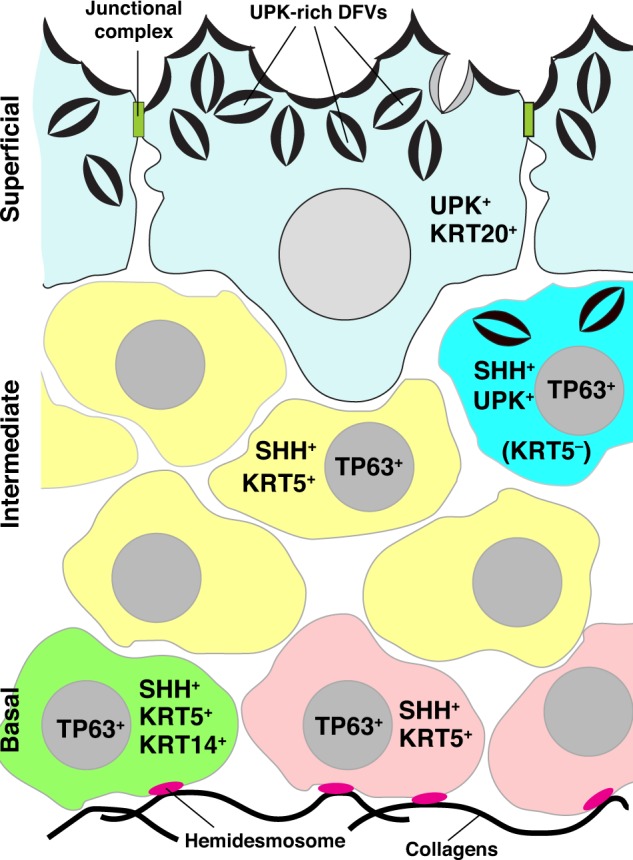Fig. 1.

Phenotype of cells present in the urothelium of adult mouse bladders. The urothelium has 3 cell layers: basal, intermediate, and superficial. Associated with the basal cell layer are two cell populations: one is TP63+, SHH+, KRT5+, and KRT14+ (green-colored cell) and proliferates in response to urothelial injury, and the other cell type is TP63+, SHH+, KRT5+, and KRT14− (mauve-colored cells). Basal cells are the only cells that form hemidesmosomes and express the β4-integrin receptor. Intermediate cells also have two phenotypes. The majority of cells (yellow colored) are TP63+, SHH+, and KRT5+, whereas a smaller population express TP63 and SSH, but not KRT5 (cyan colored). This latter population of cells also expresses UPKs (which are present in discoidal- and/or fusiform-shaped vesicles; DFVs), and can give rise to superficial cells in response to acute injury. Umbrella cells are UPK+ and KRT20+ (pale blue colored). They are attached to one another by junctional complexes and their cytoplasm is filled with DFVs.
